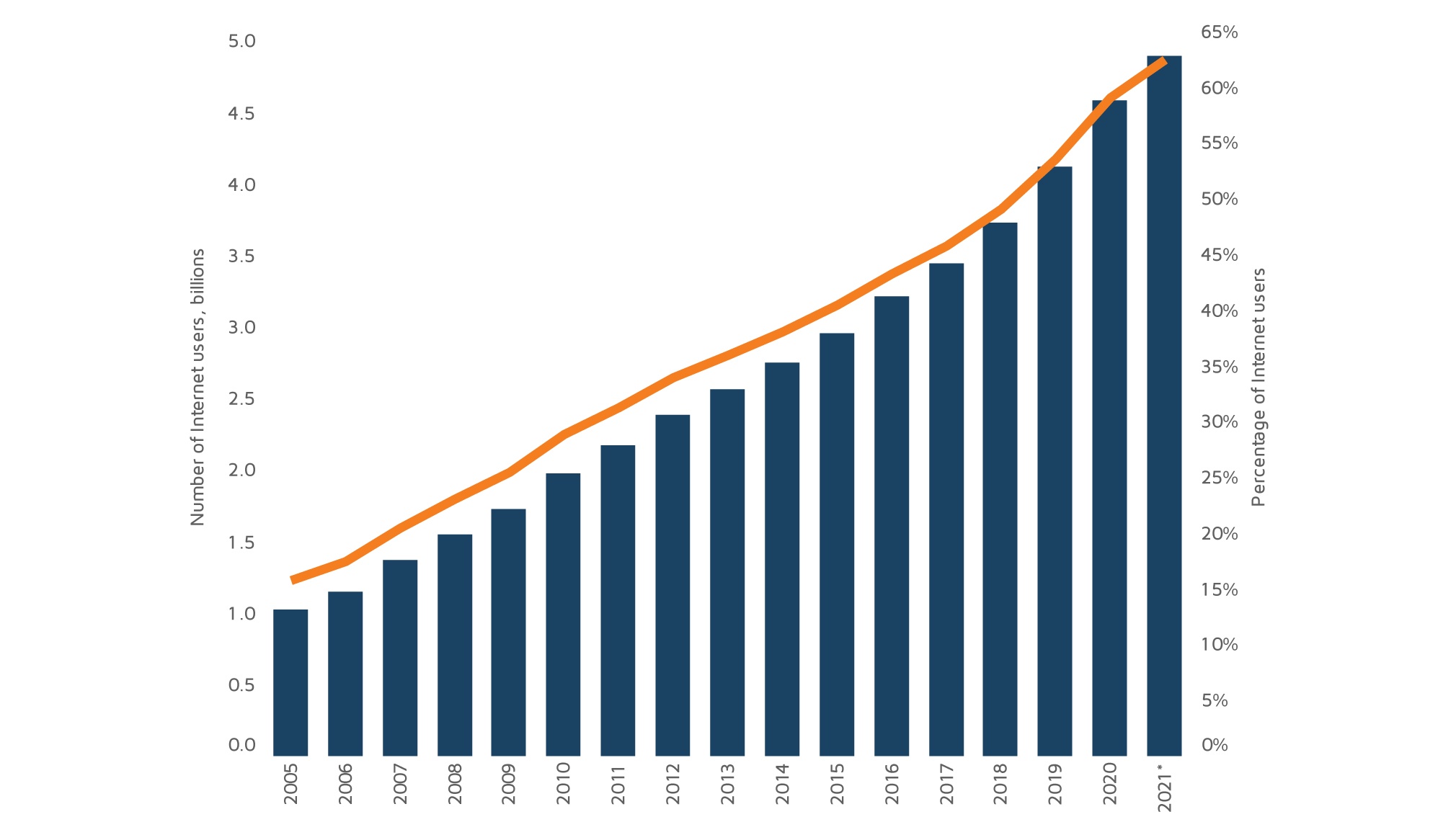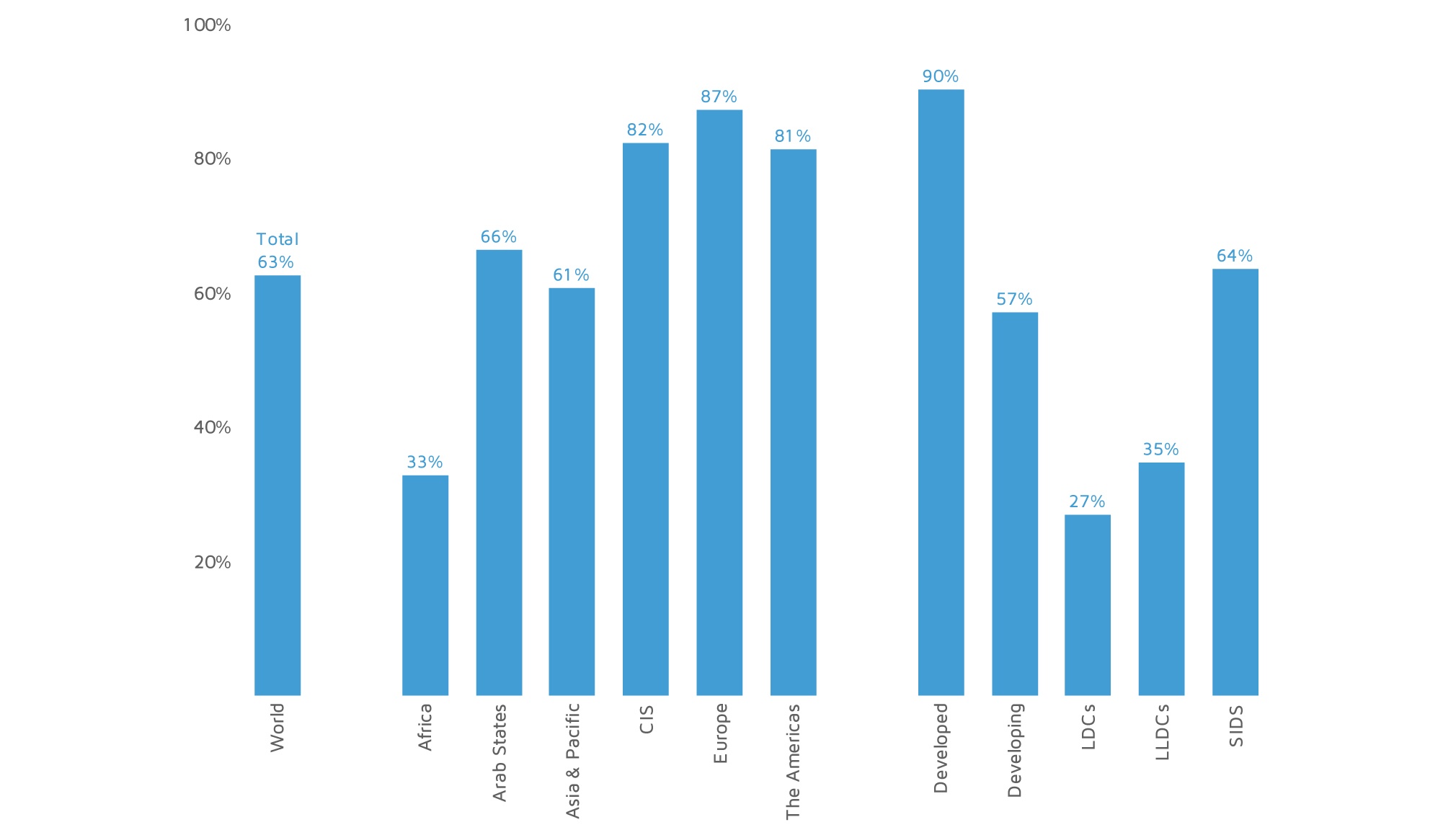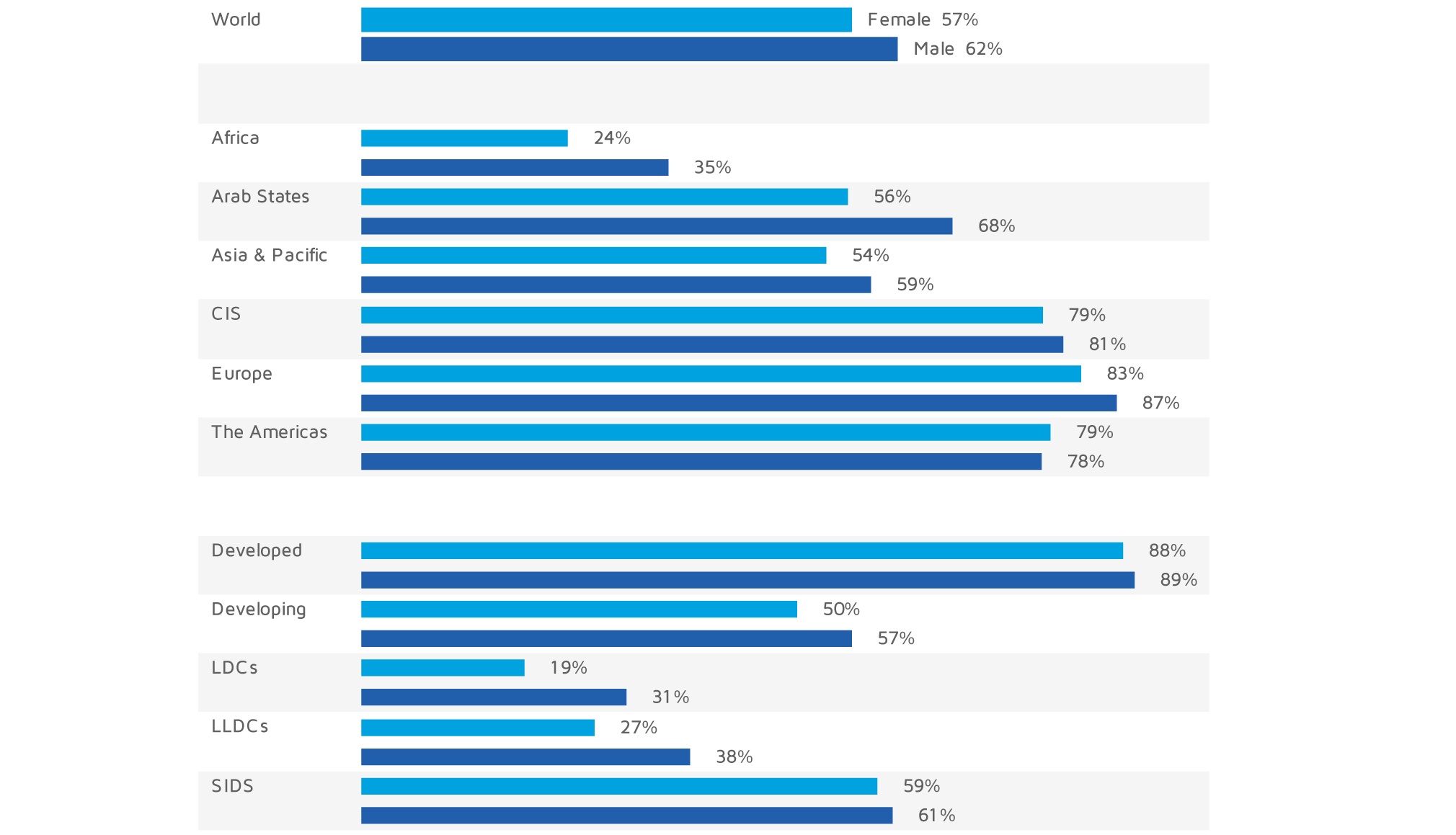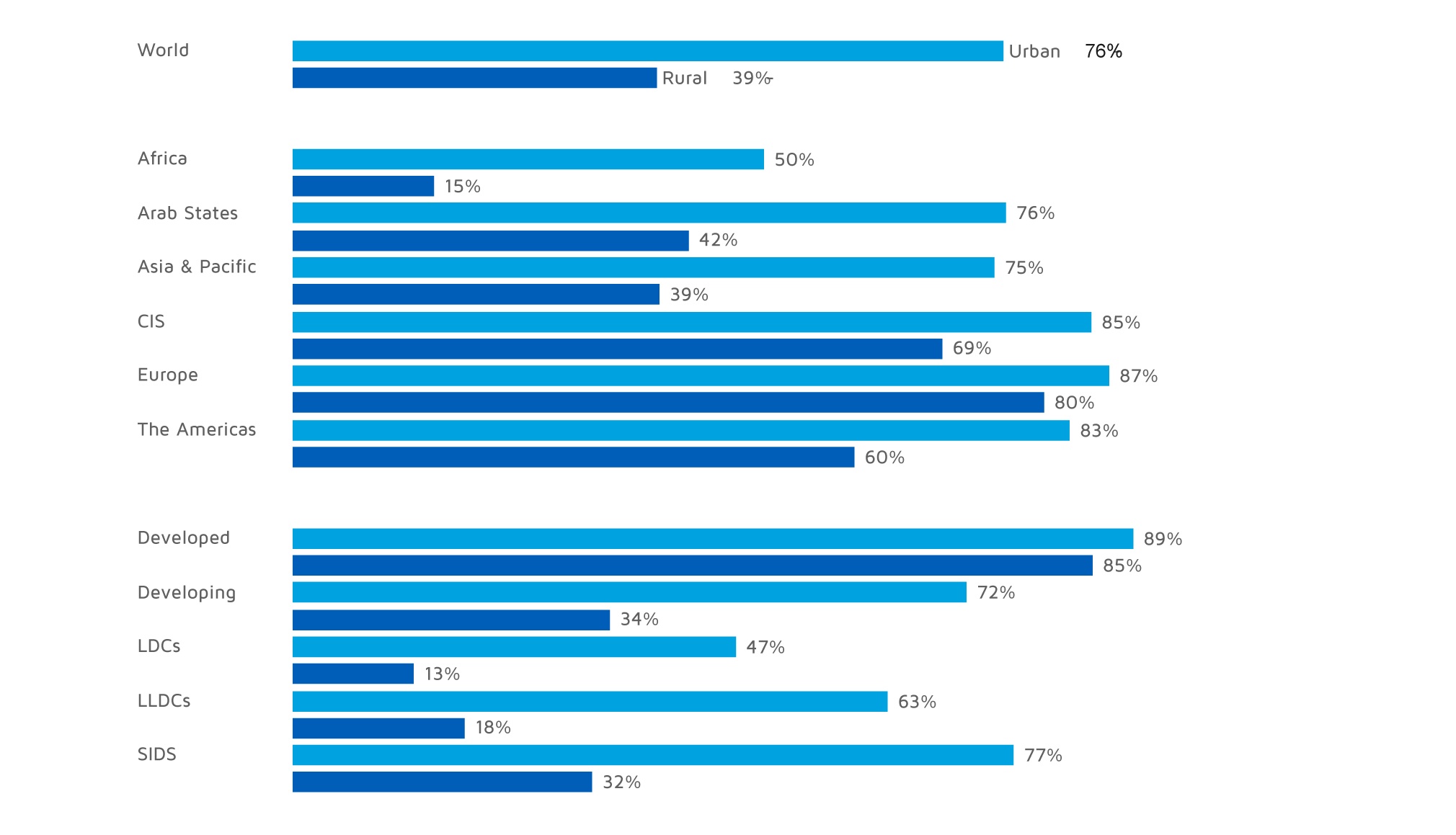As many as 63% of the global population went online in 2021, compared to 54% in 2019, International Telecommunication Union reports. However, despite the progress, people’s possibility to connect internet is still unequal, as about 37% of the population around the world have never connected to the internet. The majority of individuals facing connectivity barriers reside in developing or the least developed countries.
According to a report published by the International Telecommunication Union (ITU), the number of internet users has grown up to 4.9 billion people in 2021 compared to 4.1 billion people in 2019. New data suggests that growth occurred partially due to the “COVID connectivity boost”. The largest increase in a decade occurred in 2020 when the number of users hiked by 10.2%. The push was driven by emerging countries with a 13.3% growth in the number of users. In 2021, the figure dropped to 5.8%.
Developing countries home to most offline people
A #COVID19 ‘broadband boost’ has pushed the number of internet users to 4.9 billion, the biggest 2yr growth in 10+ years. Great news – but 37% of the world’s people remain totally #offline. Finding ways to get them connected has never been more urgent #ITUdata #LeaveNoOneBehind pic.twitter.com/ZFLxSy5M1V
— Doreen Bogdan (@DoreenBogdan) November 30, 2021
However, according to ITU, despite the significant progress still, in 2021, 2.9 billion people globally had no internet connection due to numerous barriers to connectivity. The report states that of 2.9 billion people, 96 % reside in developing countries. According to estimates, in 2021, around 390 million people did not have mobile coverage.
Doreen Bogdan-Martin, Director of ITU’s Telecommunication Development Bureau, commenting on the progress noted:
“These statistics show great progress towards ITU’s mission to connect the world. But a vast ‘connectivity chasm’ remains in the LDCs, where almost three-quarters of people have never connected to the Internet. Women in LDCs are particularly marginalized, with roughly four out of every five still offline.”
Besides, Doreen Bogdan-Martin emphasized the urgency of expanding internet coverage worldwide, by twitting: “A #COVID19 ‘broadband boost’ has pushed the number of internet users to 4.9 billion, the biggest 2yr growth in 10+ years. Great news – but 37% of the world’s people remain totally #offline. Finding ways to get them connected has never been more urgent.”
Fig.1. Individuals using the Internet

On a regional prospect, the internet connectivity in Africa and the Asia-Pacific grew by 23% and 24%, respectively. The progress was recorded also in the least developed countries (LDCs) where the number of internet users grew by 20%. Currently, following the progress, 27% of the population in LDCs have connection to the internet. The progress was lower in developed countries, as the majority, above 90%, of the population, had internet even before.
Fig.2. Percentage of individuals using the Internet, 2021

Gender parity
In 2020, around 62% of men globally went online, compared to 57% of women. Gender parity, meaning the female percentage of users divided by the male percentage being bounded between 0.98 and 1.02, narrowed down almost in all regions. In 2020, the global gender parity score reached 0.92 compared to 0.89 in 2018. However, inequality remains significant in LDCs, where only 19% of women have access to the internet.
Fig.3. Percentage of female and male population using the Internet, 2020

Urban vs rural gap
ITU reports people living in urban areas use the internet twice more than people from rural areas. For instance, in Africa, this gap is even larger, with one-half of the urban population going online compared to just 15% of rural dwellers. In LDCs, only 13% of the rural population uses the internet, while 47% of people living in urban areas are internet users. At the same time, the gap almost vanished in developed countries, with urban population connectivity being only four percentage points higher than rural population.
Fig.4. Percentage of individuals using the Internet by location, 2020


